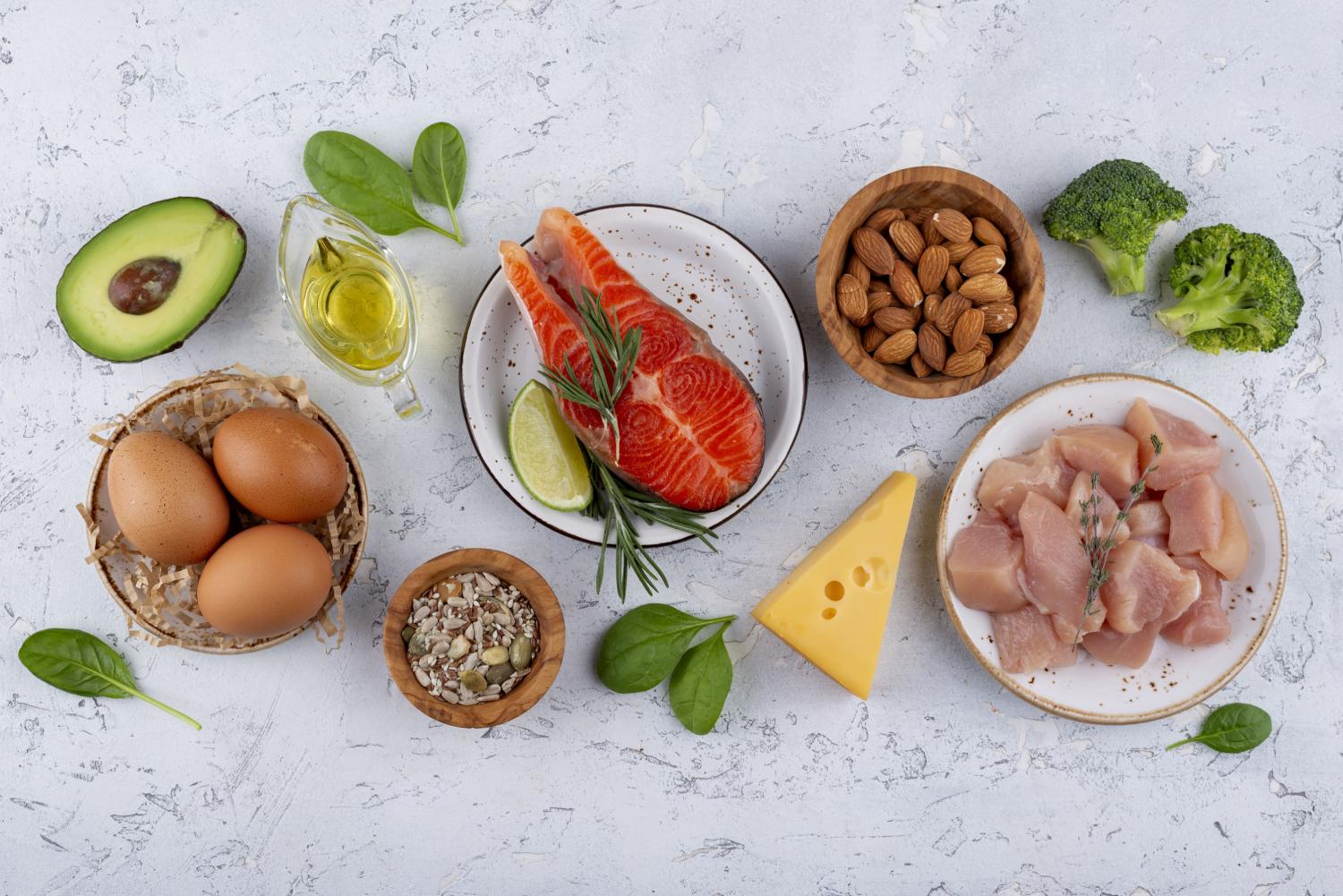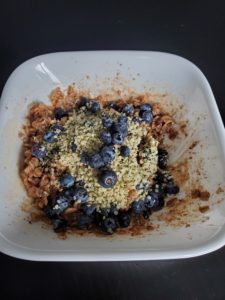
If you have been following my Instagram account or Facebook account, you would notice that I’m sharing lots of pictures of what I’m eating and the nutrient content of the meals. The nutrient content that I’m sharing are the macros, or the macronutrients of protein, carbohydrates, and fat. But what does it all mean? And according to my sister, “How does that pertain to a normal person like me?”. Now let me explain.
There are many ways to eat healthy. To maintain weight, you can generally get by with my healthy suggestion of taking a plate, and dividing it so 1/2 the plate is veggies, 1/4 plate is protein, and 1/4 plate is starch. I find this is the easiest because you don’t have to measure anything at all (calories, grams, nor milliliters). But then the confusion begins. What if I sautee my veggies, and it went from 1/2 the plate to 1/4? What if my protein was beans, which is a mix of protein and starch? Or, what if I am eating this way, and I want to lose weight? Do I have to eat less?
If you have these similar questions, then you may need to count your macros. With my program, The FASTer Way to Fat Loss, we start with 45% carbs, 25% protein, and 30% fat. And the macros proportion is more important than the calories themselves. We will calculate your gram goals by taking your weight, height, age, activity level, and if you want to maintain weight, gain weight or lose weight. Now that you have your gram goals, you know how much you should be eating daily. You don’t want to eat less, because then you won’t have enough food to fuel your energy, make muscle, sleep well, recover, and balance your hormones.
For myself, I need to regularly eat 180g carbs, 100g protein, and 55g of fat. This is my regular macros day, which ends up being 1620 calories a day. This is how much I need to eat so that I have energy, a good mood, a functioning thyroid, protein to repair my muscles as they strengthen, while losing weight. If you have counted calories before, you may think, “Isn’t 1620 calories a lot to lose weight? I was always told I need about 1300 calories to lose weight?”. That’s why counting macros is more important.
This leads to my food posts. When I am planning a meal, and I have 3 meals a day, I am looking for something that is balanced. If you do the math, then you can see what I should aim to eat: 1/3 of my macros per meal. That means each meal should have about 60g carb, 30g protein, 18g fat. Let’s see how my break-fast fits in.
Today I ate a delicious toasted oatmeal from Cookie + Kate, and added 3 tbsp of hemp hearts, 1 cup of blueberries, and 1 scoop of protein powder (the vanilla flavour sweetens it)
Macros:
Carb 49g
Protein 18g or (39g with protein powder)
Fat 25g
Now you can see that I’m very close to my ideal meal.
For lunch, I will chose a baked cod with green beans, and for dinner roasted sweet potato, and chickpeas with bacon roasted Brussel sprouts on the side. I was trying to make this plant-based, but needed extra fat to balance off the day.
Total Macros for the day, including collagen infused tea:
Carb 109g
Protein 105g
Fat 57g
I preplanned this meal, and I can see that I still have room for 71g of carbs. So I can add fruit, more veggies, or a whole food baked treat! (FYI a banana, an apple, or 1/2 cup of jasmine rice each has 25g of carb).
How to Calculate Your Own Macros
- Start with a simple percentage split of carbs, protein, and fat.
- Track your meals for at least a week and observe how you feel.
- If energy feels low, increase carbs slightly.
- If you feel hungry often, add a bit more protein or fat.
I hope that you understand macros a bit better, and how to aim for better nutrient dense meals. The secret is: if you are eating your macros in the right proportion, with whole foods, you will have all the nutrients you need. You will feel full, satisfied, and you won’t have cravings. Pair this with Intermittent Fasting and Carb Cycling plus 30 minute curated workouts, and you have The FASTer Way To Fat Loss program.
Join me for the next 6 Week Client Experience here.
Final Tip: Don’t Forget Micronutrients
While macros are key, don’t forget the importance of micronutrients such as vitamins and minerals from vegetables, fruits, and whole foods. They support immunity, bone health, and energy metabolism. When you balance both macros and micros, you create a sustainable nutrition plan that fuels your body long-term.

